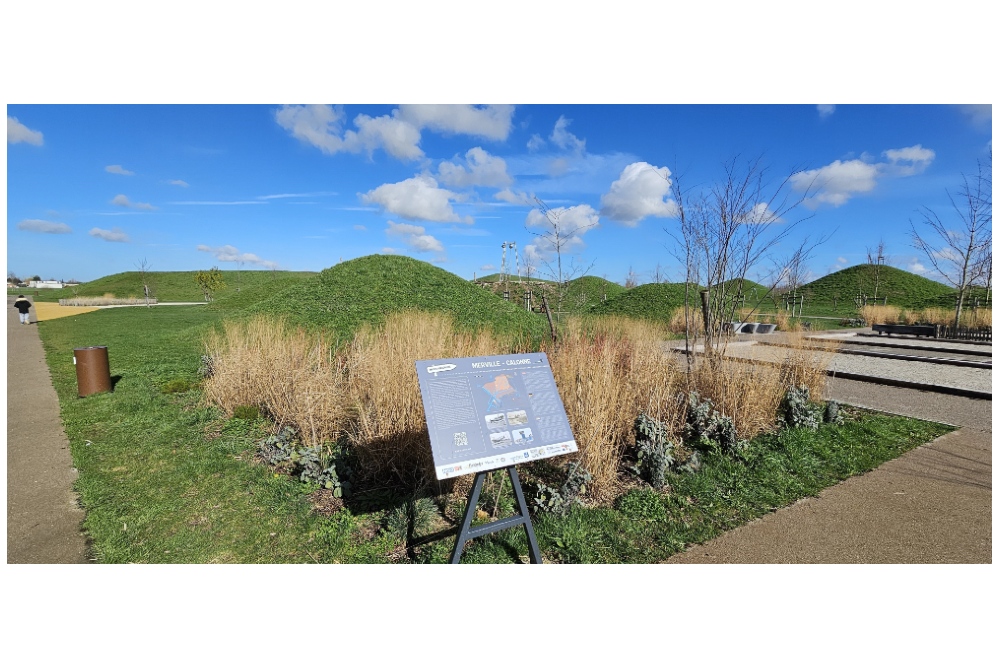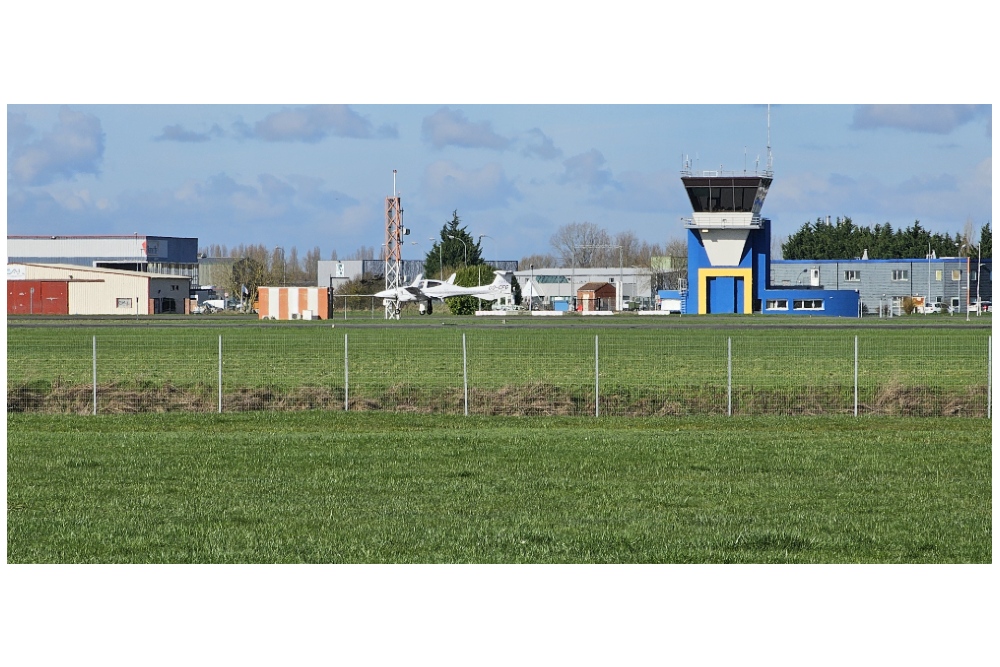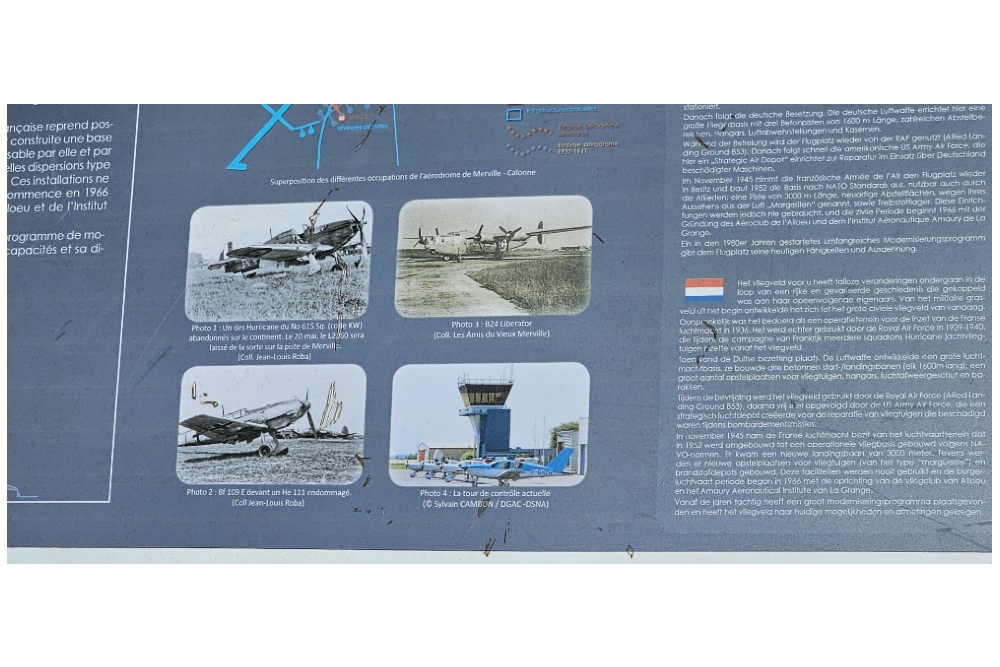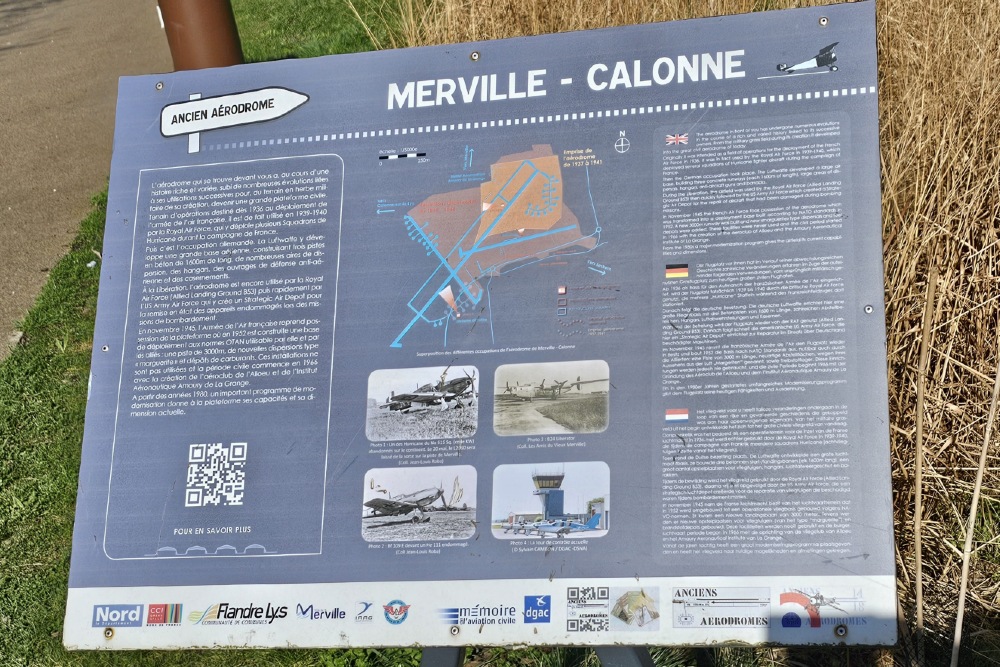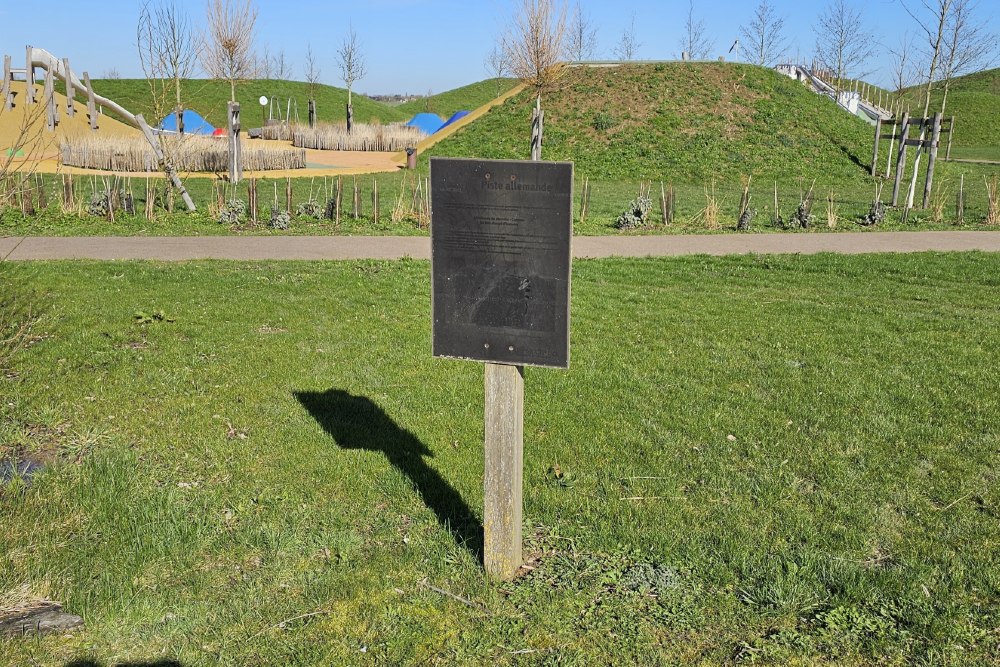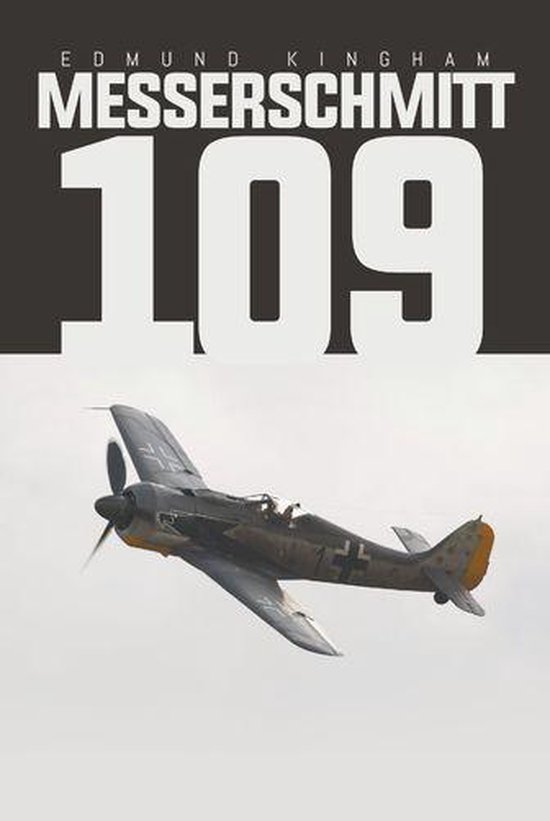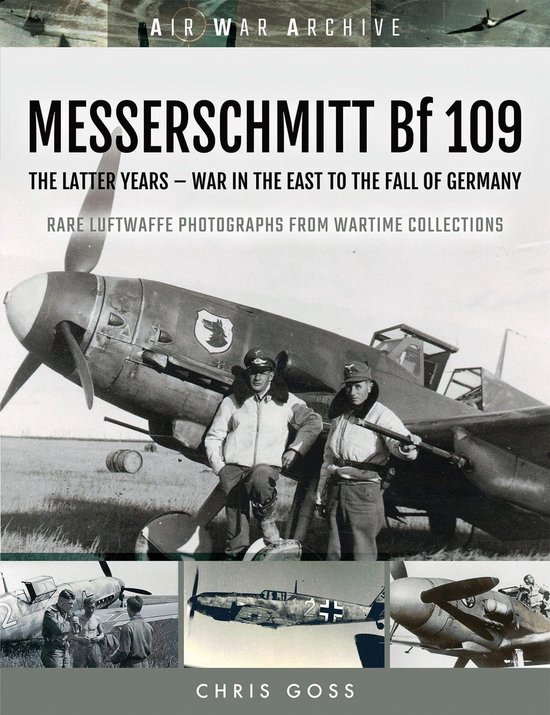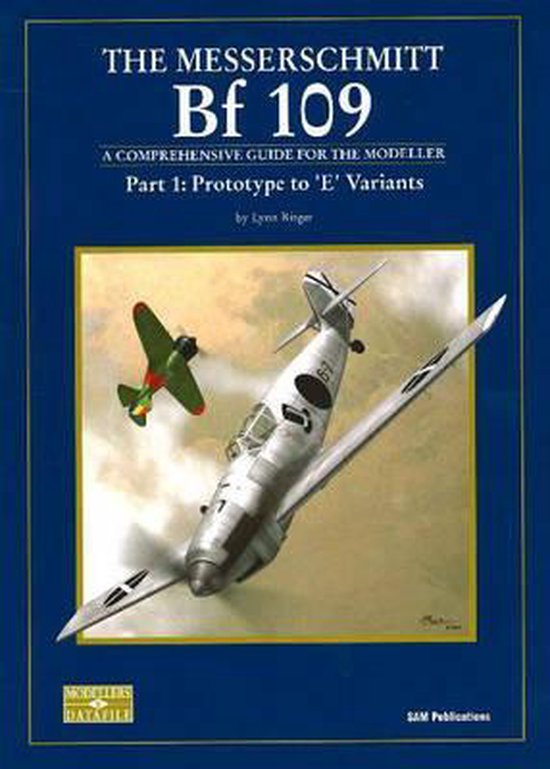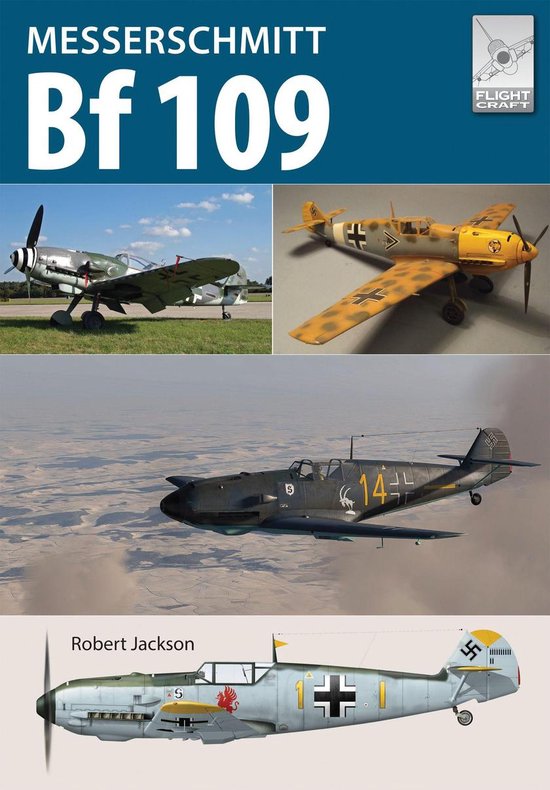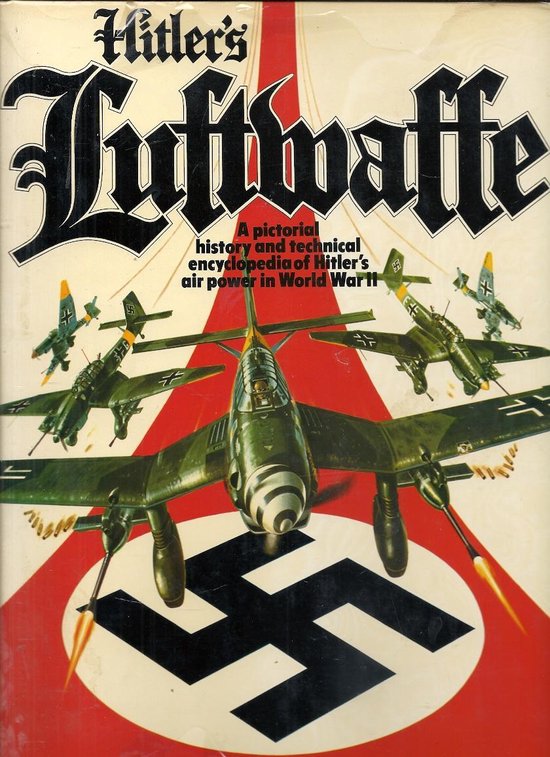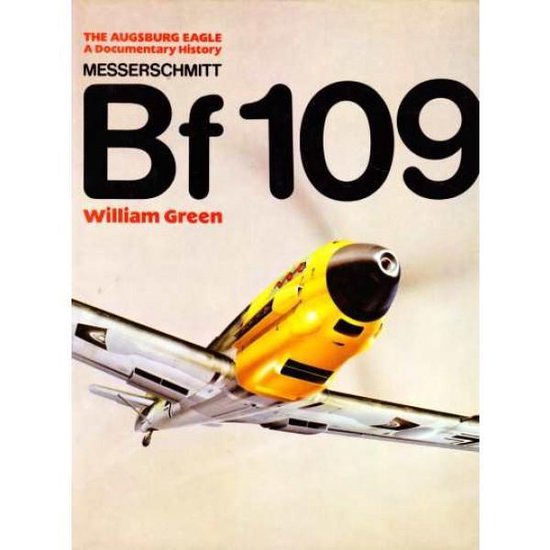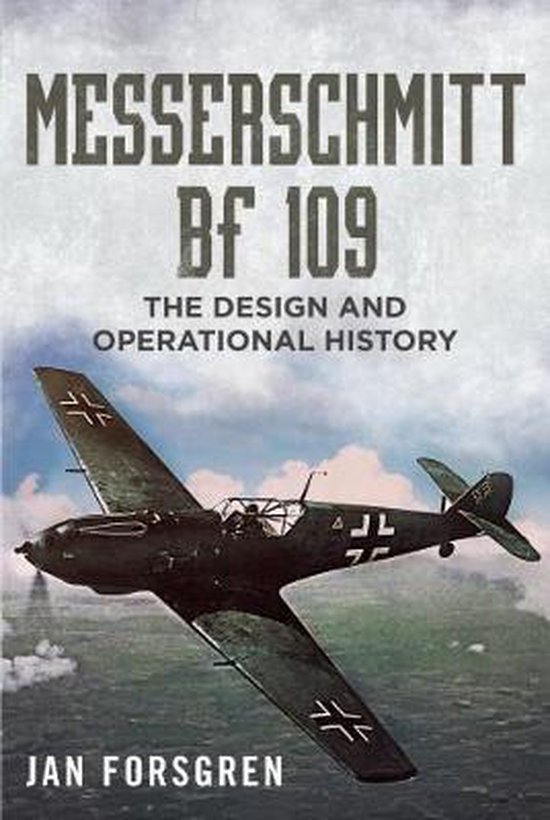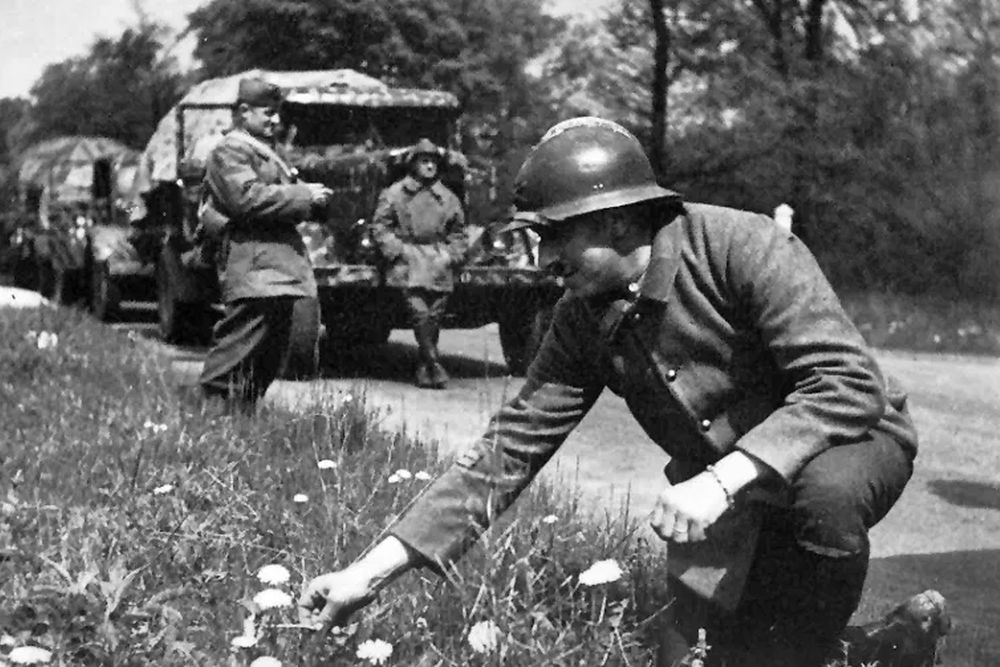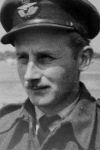Merville Airport (Flugplatz Merville - ALG B 53)
In the Pas-de-Calais department, the forgotten Merville airfield is located in the municipality of Lestrem. Originally built in 1936/37 for military purposes, this civilian airfield is still in use today and still contains remnants of World War II. After being used successively by the British Royal Air Force and the German Luftwaffe, when the area was liberated, this airfield was brought back into use by the R.A.F. as B-53 Advanced Landing Ground.
After the war, the airfield was adapted to NATO standards as an operational airbase. After France's withdrawal from NATO military bodies in 1966, it became a civilian airport. Over time, the airport has had various names depending on the municipal reclassifications of the area. The current name is Merville-Calonne Airport.
During the Twilight War (Phoney War), which lasted from 1 September1939 to 10 May 1940, the RAF occupied this airfield until its capture by the German army during the Battle of France. From June 1940 to November 1940, the following German bombing units were stationed at the flugplatz:
II./KG4. (2nd Gruppe of Kampfgeschwader 4)
I./KG27 (1st Gruppe of Kampfgeschwader 27).
From 17 November 1940, the flugplatz was used by II./KG2 (2nd Gruppe of Kampfgeschwader 2) with its Dornier Do-17 (Flying Pencil/Flying Pencil) which unit was involved in the Battle of Britain. On 8 March 1941, I. Gruppe KG 2 joined the II. Gruppe. For the two Gruppen, deployment over England ended when they had to start preparing for the Balkan War.
After the departure of both Gruppen from KG2, the Flugplatz was expanded into a real Fliegerhorst with three concrete runways. Presumably at the end of January 1942, an Ergänzungsstaffel (additional squadron) of an unidentified unit was stationed at the Fliegerhorst with both Messerschmitt Bf-109s and Bf-110s as part of pilot training.
In October and November 1942, the Fliegerhorst was occupied by II. Gruppe of Jagdgeschwader 2 (JG2) with its Staffeln 4, 5 and 6. On 17 November 1942, these units were transferred to Silesia, now located in present-day south-west Poland. One or more units of Jagdgeschwader 26 would have remained at the Fliegerhorst until the end of 1942.
From January to April 1943, the 11. /JG54 (11th Staffel of (Höhe) Jagdgeschwader 54 (JG54) would have flown from here with Messerschmitt BF-109 G-1 and G-3. The main airfield of this unit was located near Lille-Vendeville.
Until August 1943, the Fliegerhorst was hardly used until III./JG2 (3rd Gruppe of Jagdgeschwader 2) was stationed at the flugplatz with its Fw-190 A-4 JABO for mainly training flights with the Lorentz night flying system.
In October 1943, the Fliegerhorst was secured by seven light anti-aircraft (FLAK) positions.
In September 1944, the Fliegerhorst was captured by Allied forces who, after necessary repairs, then put the field into use as Advanced Landing Ground B-53. This A.L.G. was then used by 135 Wing of the 2nd Allied Tactical Air Force (2nd. ATAF).
One of the best-known Dutch May pilots who flew from this A.L.G. is Jan Linzel. After his escape from occupied Europe, he was admitted to the pilot training programme of the R.A.F. During his pilot training in 1943/1944, Linzel was placed with various units and at various air bases. On 4 August 1944, he was posted to operational 33 Squadron, stationed at RAF Selsey-Bill and located about 20 km east of Portsmouth, England. This squadron belonged to the aforementioned 135 Wing. This Wing was engaged in air and ground attacks in aerial support for the land army.
As the front line moved daily, the Advanced Landing Grounds moved with it. With this squadron he finally arrived in September 1944, via B.17 Carpiquet near Caen, France, at A.L.G. B.35 (Le Treport) from where he and two other pilots flew an armed reconnaissance to two ships near Vlissingen on 10 September 1944. However, heavy anti-aircraft fire was present over the Westerschelde and the three pilots barely managed to escape. They all escaped with a fright.
The very next day they flew on to their new temporary base, A.L.G. B.53 Merville. From here, Linzel conducted several operational flights until the squadron was moved again on 1 November 1944. This time to B.65, a base near Maldeghem, Belgium.
Do you have more information about this location? Inform us!
Source
- Text: Corin Gelderblom
- Photos: Corin Gelderblom
- https://www.forgottenairfields.com/airfield-merville-calonne-1065.html
- https://www.anciens-aerodromes.com/?p=21898
Related books
Nearby
Point of interest
- Bulletholes Duries Farm - Le Paradis (Lestrem)
- Location Disarmament 2nd Battalion of the Royal Norfolks - Le Paradis (Lestrem)
- Execution Wall Le Paradis - Le Paradis (Lestrem)
Monument
- War Memorial Lestrem - Lestrem
- War Memorial Calonne-sur-la-Lys - Calonne-sur-la-Lys
- Memorial Victims Execution Le Paradis - Le Paradis (Lestrem)
Cemetery
- Commonwealth War Cemetery Merville Communal - Merville
- Commonwealth War Graves Merville Extension - Merville
- Commonwealth War Graves Calonne-sur-la-Lys - Calonne-sur-la-Lys
